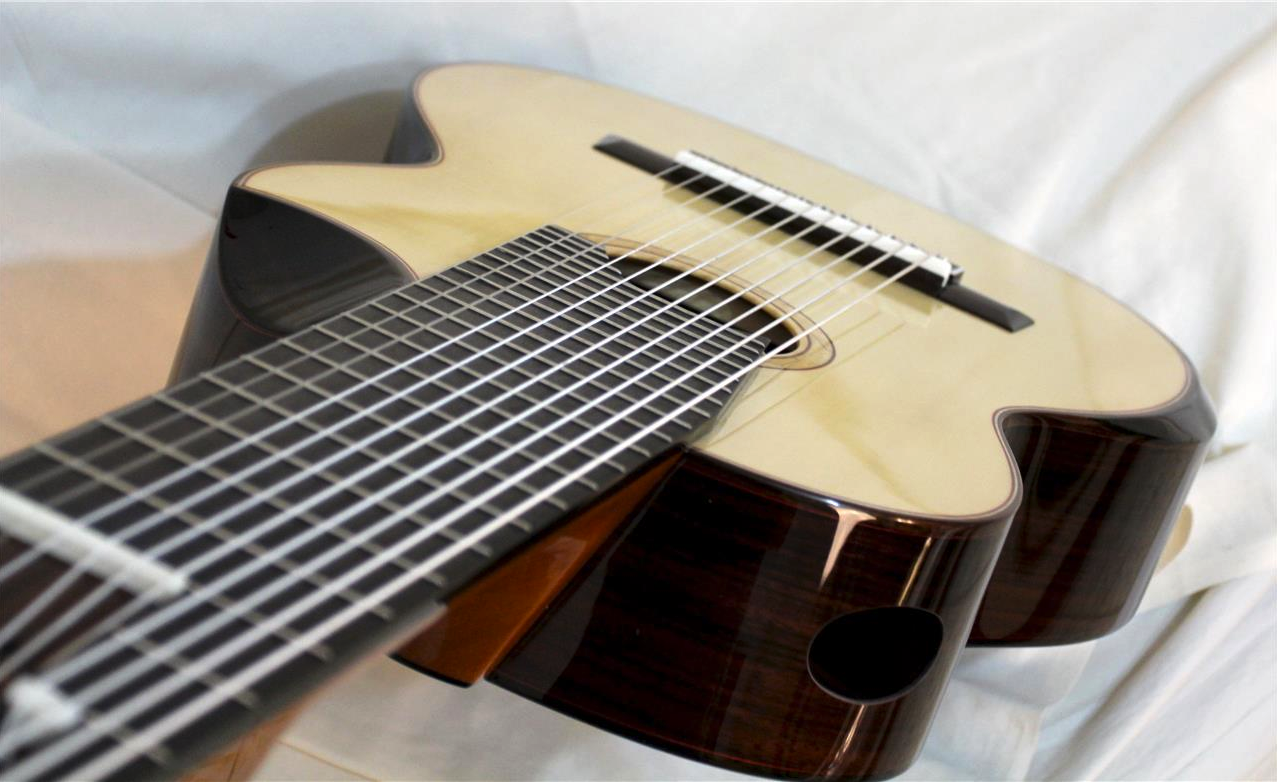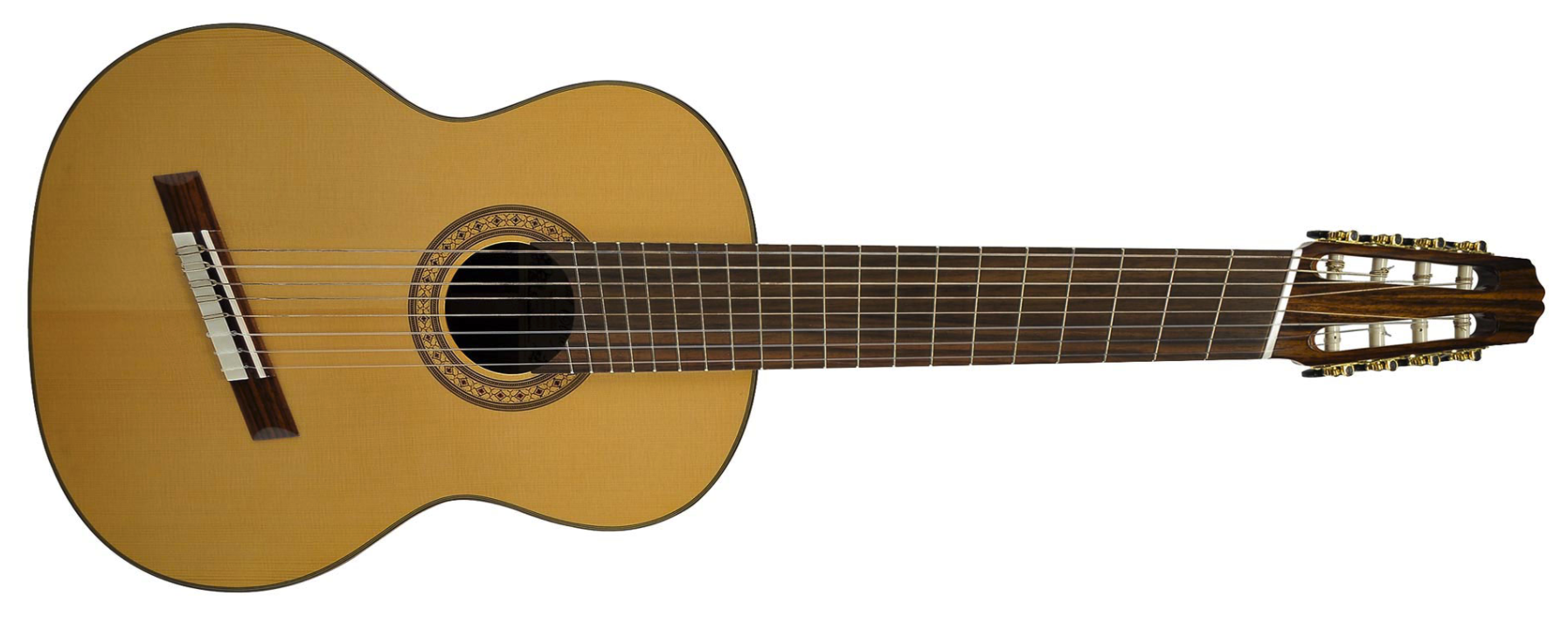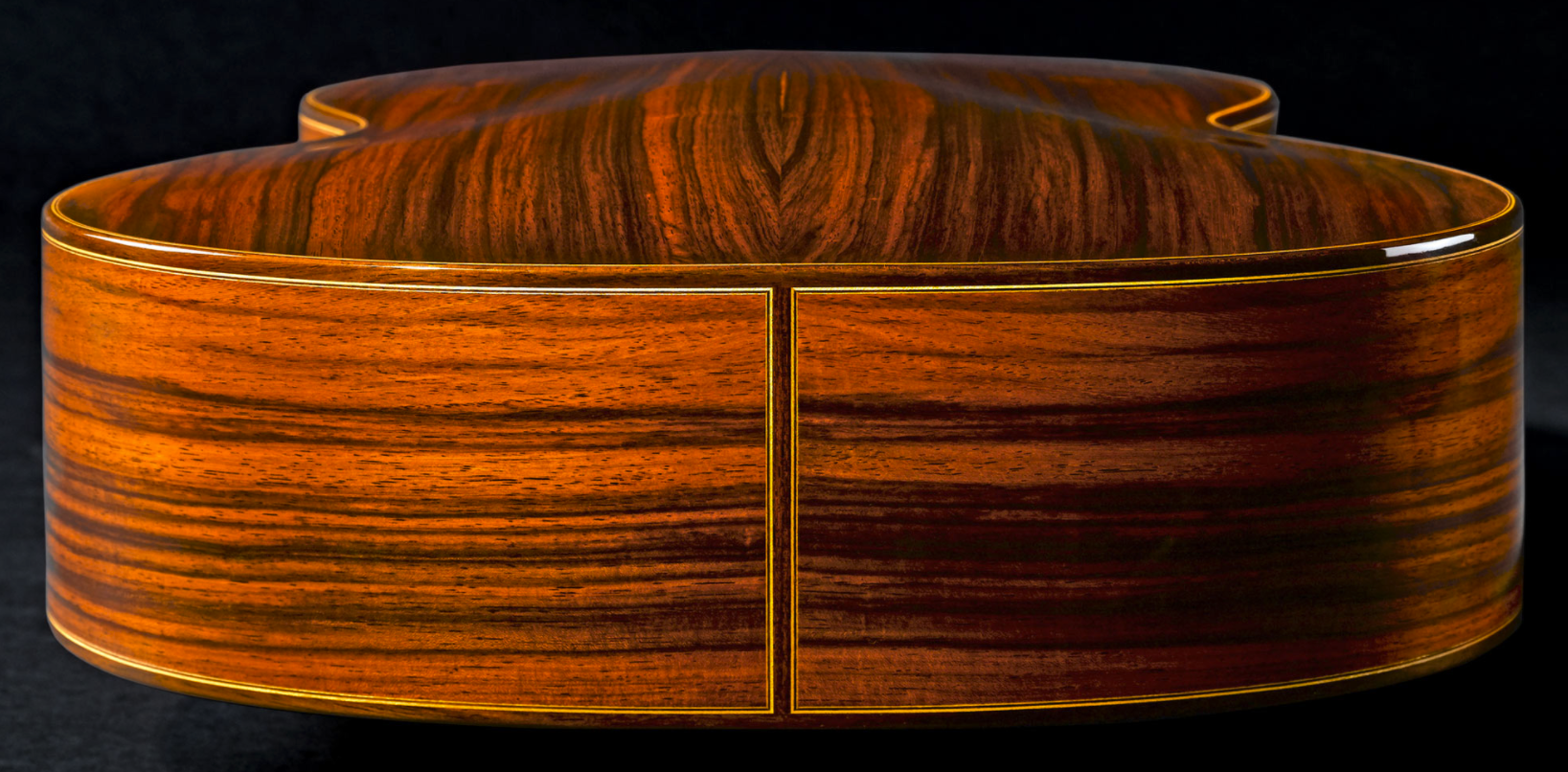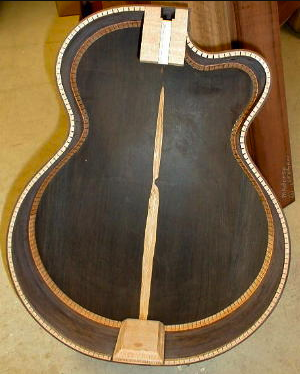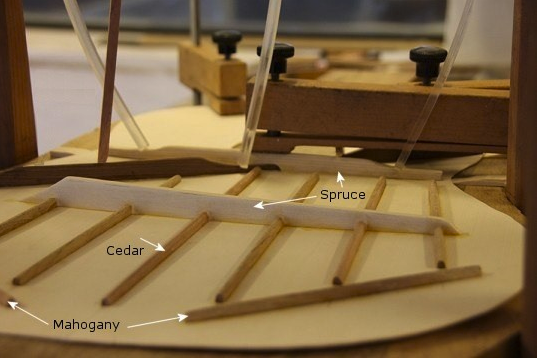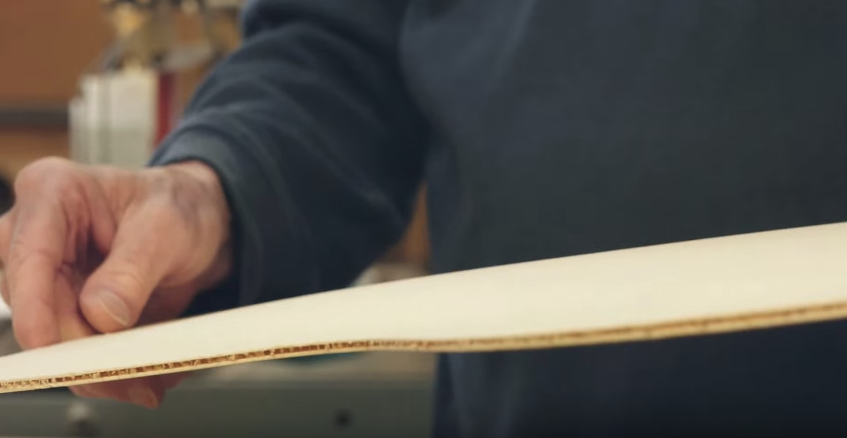Modern Classical Guitar Design Part 8: Fanned Frets
With the increasing popularity of extended range guitars (guitars with more than 6 strings) luthiers have had to devise a way to retain intonation and playability - enter the 'fanned fret' or 'multi-scale' fretboard. Is it the answer or should we just continue to play guitars with normal frets? Read on to discover more....
Introduction
Guitars with additional strings are nothing new. From the earliest days of the lute instruments that resembled guitars have always been around. However, recently guitars with more than 6 strings in the classical guitar realm have started to gain in popularity. In electric guitar circles Steve Vai is probably heralded as leading the renaissance in multi-stringed or extended range guitars even though they existed well before he burst onto the scene in the early 80s.
It was Ibanez that took up the challenge of designing a 7-string guitar that could meet Mr. Vai's demands. It would seem that the desire to have an extended range on guitar crossed over into the classical scene too. You may be thinking to yourself that Narcisco Yepes had already been playing an 11 string for many years and that is true however his instrument was extremely rare and those guitars weren't truly adopted into mainstream classical guitar.
What does this have to do with Multi-scale/Fanned fret classical guitars?
However, I digress. What does all of this have to do with fanned frets? Well, the thing is this - the more strings you add onto a guitar the greater the chances are that the intonation will become worse and worse. Bass strings need extra tension or they become 'floppy' and almost unplayable. The way to circumvent this is to make the length of the string longer i.e. the distance from the bridge nut to the neck nut should be increased the problem is you can't really do that to the treble strings otherwise they'll break or the tension will be so tight that you won't be able to play them.
Solution!
Enter the 'fanned fret' or 'multi-scale' system. Smart luthiers out there realised that if they could angle the frets, bridge, & neck nuts outwards from the treble strings they could increase the length of the bass strings whilst retaining the same or very similar scale length on the treble strings. Here's an example from Salvador Cortez guitars:
Wouldn't this be hard to play?
The simple answer is no! Think about the natural 'angles' that your fingers take when you place them on guitar...our fingers naturally splay outwards and upwards and this perfectly mirrors what is taking place on a fanned fret guitar. The result is a guitar that actually feels perfectly natural to play.
Looking for a classical guitar with Fanned Frets?
Here is a list of luthiers that are making multi-scale classical guitars:
- Stoll guitars
- Tom Bills
- Michael Greenfield (think Andy McKee)
Should you have one?
If you are planning on moving into extended range classical guitar playing then it should definitely be a consideration although strictly speaking it isn't a necessity. The most important thing is that it works well with you - not for you. The guitar as much as possible should be a natural extension of you. It should feel comfortable sitting in your lap and comfortable for your hands and fingers.
Check out my other Modern Classical Guitar Design articles
Part 9: Reinforced Carbon Fiber Neck
Part 7: Arched back
Part 6: Double Tops
Part 5: Lattice Bracing
Part 4: Armrest
Part 3: Soundport
Part 2: Indented Cutaway
Part 1: Elevated Fingerboard
Modern Classical Guitar Design Part 7: Arched Back
The Arched back (braceless) design feature has been around for a while on acoustic guitars but luthiers in the classical guitar realm have only recently started incorporating the design into classical guitars. Find out a little more about the arched back innovation by reading my article.
Introduction
Classical guitars have been around in their present form for circa 200 years. Since that time their design has been an ongoing, constant, breathing topic. Unlike many other instruments from that time the design of classical guitars and guitars in general hasn't stopped evolving. Many luthiers are constantly striving to improve the design by making guitars easier to play, lighter & stronger with beautiful tones and aesthetics to match.
One such design that has been gaining more ground over the past few decades is the 'arched back classical guitar'.
Traditional Vs Arched
One of the best ways to describe the arched back of a classical guitar is to compare it to the traditional back which was for all intents and purposes - flat. The picture below shows a traditional classical guitar design with a flat back.
Pictured below is a wonderful picture clearly showing the arched back and its radically different style.
From the two pictures above it is very easy to see the aesthetic differences between the two designs. Yet perhaps the most important point to consider is the impact upon volume, comfort, and tonal difference that an arched-back designed guitar has compared to it's flat-backed predecessors.
A little bit of history
Arched back guitars have been around for at least 4 decades and have been used quite regularly in acoustic guitar design by famous makers such as Taylor and Guild. Their use and integration into production-model guitars by such well-known and respected guitar makers is a definitive sign that the design works and has been accepted by the guitar community at large. Classical guitar makers have been a bit slower to adopt the arched back design but it is definitely gaining momentum and acceptance by luthiers around the globe.
Pros & Cons
At the heart of the matter is sound and more so the quality of sound. Many guitar makers in recent years have been striving to make classical guitars that have more projection and are louder than the guitars of yesteryear. There is a school of thought out there that believe the beautiful lively tones of Ramirez & Hauser has been superseded & replaced by guitars that have volume but lack the beautiful and somewhat earthy and wild sound of older instruments. This of course if purely subjective and there are posits for both camps.
Let's look at the Pros
- Increased rigidity - similar to the strength of an arch in a building or bridge
- Focused - the parabolic shape is said to 'focus' the projection of the sound
- Raises the resonant frequency
- Increased sustain
A rare glimpse at an arched back with 'braceless construction'.
Let's look at the Cons
- Heavier than a comparable flat back
- Tend to sound 'darker'
- Excess sustain can 'muddy' up the sound
Where can I buy one?
Here's a nice list of luthiers that are making braceless arched back classical guitars with great results:
I have to be honest and say that the only arch back guitars I've played have all been Ovation guitars (which is about as arched as it gets!) so I'm writing this article based upon testimonies of luthiers and players. Please leave a comment below and also check out my other articles on modern classical guitar design innovations.
Check out my other Modern Classical Guitar Design articles
Part 8: Fanned Frets
Part 6: Double Tops
Part 5: Lattice Bracing
Part 4: Armrest
Part 3: Soundport
Part 2: Indented Cutaway
Part 1: Elevated Fingerboard
Let your fingers fly!
Modern Classical Guitar Design Part 6: Double Top
Don't know what a 'Double/Composite/Sandwich Top' is? Read this article to learn about them and find out how to buy one for about $500 -700!!!
Introduction
Of all the classical guitar design innovations that have evolved over the past three decades soundboard design is the one that has probably had the most time, effort, and thought dedicated to its development.
Why is this? The soundboard is where it all happens. It's the engine room and apart from your fingers the soundboard is the single-biggest factor in determining and shaping the overall sound and characteristics of the sound that you produce.
Traditional Soundboard Design
Traditional soundboard design is based around the Torres fan bracing style (see my other article on classical guitar bracing here) combined with a single piece of wood. That's the short of it. Have a look at the image below to see what a traditional soundboard looks like.
Double Top; Composite Top; Sandwich Top
As you can see in the image above a 'Double Top' or 'Sandwich Top/Composite Top' as it also called has two extremely thin pieces of wood joined together by a central core. Matthias Dammann is the German luthier associated with creating the first double tops for classical guitars however, it is Gernot Wagner (also from Germany) that suggested to Dammann to replace the tiny filaments of wood that he was using as the core with another material known as nomex.
Luthiers will usually apply a thin layer of epoxy to the nomex and the add the wooden top and bottom afterward effectively 'sandwiching' the nomex in-between using a vacuum press to seal all the bits together. The result is an exceptionally stiff & strong yet light and durable soundboard with delightful sonic capabilities often described by guitarists as having increased volume, a wider dynamic range, and lower bass fundamentals.
Famous Classical Guitar Luthiers Building Double Tops
- Matthias Dammann (watch a video of me playing a 1995 Dammann in Hong Kong)
- Gernot Wagner
- Jim Redgate
- Robert Ruck
- Greg Smallman (read my article on lattice bracing)
Famous Players Playing Double Tops
- Jason Vieaux
- Manuel Barrueco
- John Williams
- David Russell
- Scott Tennant
How You Can Get Your Hands On A Cheap One!
As you've probably guessed guitars from those luthiers don't come cheap so start saving or alternatively can source some nifty double tops from Aiersi in China starting at around US$500. I came across them out of curiosity when I was living in China. Considering what you're paying you get quite a decent guitar that usually has all the bells and whistles including:
- 7 strings (if you want that)
- Double top (obviously)
- Armrest
- Elevated fretboard
- Soundport
- Electrics
- All solid wood
- 20th fret
I'm not endorsed by Aiersi but I do think they represent a good deal if you haven't got US$10k lying around under the couch cushions. I should point out that Aiersi do offer OEM which basically means that if you buy X amount you can put your own label on them and start marketing them as your own brand. I've got nothing against that personally but you can expect (and I have seen these prices recently) to pay about US$2k if you live in the USA or a similar amount in Canadian $. I saw a fellow classical guitarist YouTuber recently post a review of a new brand in Canada selling Aiersi guitars as their own brand for 2k (they just put a fancy Italian/Spanish sounding name on it). Do yourself a favour - just buy direct from Aiersi but be sure to do your homework with your local import government office and be aware of any import duties, taxes, and also check that the wood the guitar is made from isn't subject to any regulations.
Check out my other articles in the
'Modern Classical Guitar Design Series':
Part 8: Fanned Frets
Part 7: Arched back
Part 5: Lattice Bracing
Part 4: Armrest
Part 3: Soundport
Part 2: Indented Cutaway
Part 1: Elevated Fingerboard
Let your fingers fly!


